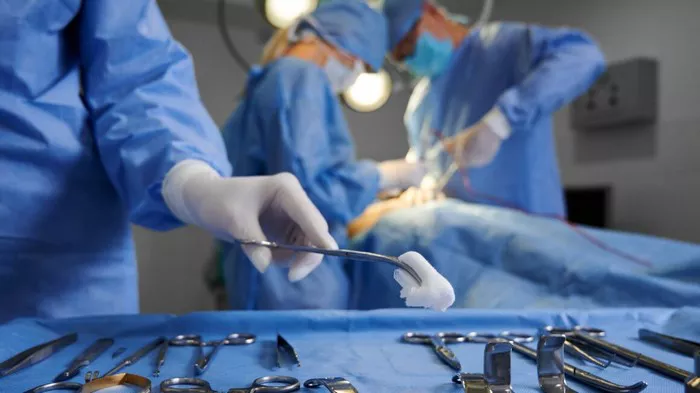Breast tissue expanders are an essential part of breast reconstruction surgery, particularly after mastectomy. These medical devices are designed to stretch the skin and muscle to make room for a permanent breast implant. While they serve a critical role in reconstructive surgery, like any medical procedure, they come with potential side effects. Understanding these side effects can help patients make informed decisions and prepare for the recovery process.
Introduction to Breast Tissue Expanders
Breast tissue expanders are temporary implants used to create a pocket for a permanent breast implant. They are typically inserted during or after a mastectomy and gradually filled with saline solution over several weeks or months to stretch the skin and muscle. This gradual expansion process helps to ensure that the final breast implant will fit properly and look natural.
While the use of tissue expanders is generally safe, patients should be aware of the potential side effects that can occur. Here, we discuss seven common side effects associated with breast tissue expanders.
1. Pain and Discomfort
Initial Discomfort
One of the most common side effects of breast tissue expanders is pain and discomfort. This discomfort typically occurs immediately after the expander is placed and can persist throughout the expansion process. The feeling can range from mild soreness to more intense pain, particularly after each saline injection.
Managing Pain
Pain management strategies include over-the-counter pain relievers, prescribed medications, and sometimes muscle relaxants. It’s important for patients to communicate with their surgeon about their pain levels to adjust their pain management plan as needed.
2. Infection
Risk of Infection
Infection is a serious but relatively rare side effect of breast tissue expanders. It can occur at the incision site or around the expander itself. Signs of infection include redness, swelling, increased pain, and fever.
Preventing and Treating Infections
Preventative measures include maintaining proper hygiene, following post-operative care instructions, and monitoring the incision site. If an infection occurs, it may require antibiotics or, in severe cases, removal of the expander.
See Also: 7 Symptoms of an Allergic Reaction to Breast Implants
3. Expander Leaks or Ruptures
Causes of Leaks
Although designed to be durable, tissue expanders can sometimes leak or rupture. This can happen due to manufacturing defects, trauma to the chest area, or excessive expansion.
Signs and Solutions
Signs of a leak or rupture include a sudden decrease in breast size or asymmetry. If a leak is suspected, immediate medical attention is necessary. The expander may need to be replaced or removed, depending on the severity of the leak.
4. Asymmetry
Uneven Expansion
Achieving perfect symmetry with tissue expanders can be challenging. Differences in expansion rates between the two breasts can lead to noticeable asymmetry.
Correction Options
If significant asymmetry occurs, it may require additional surgical interventions to correct. This might involve adjusting the saline volume in the expanders or making surgical adjustments once the permanent implants are in place.
5. Capsular Contracture
Formation of Scar Tissue
Capsular contracture is a condition where the scar tissue that naturally forms around the expander tightens and hardens. This can cause the breast to feel firm and look distorted.
Treatment and Prevention
Treatment options for capsular contracture include medications, massage techniques, and in some cases, surgical removal of the scar tissue. Preventative measures include proper surgical techniques and post-operative care.
6. Skin and Tissue Damage
Risks of Overexpansion
Overexpansion or rapid expansion of the tissue expander can cause damage to the skin and underlying tissues. This can result in thinning of the skin, stretch marks, and even necrosis (death) of the skin tissue.
Monitoring and Management
Careful monitoring of the expansion process is crucial. Patients should follow their surgeon’s guidelines on expansion rates and report any concerns immediately. In some cases, reducing the rate of expansion can prevent further damage.
7. Emotional and Psychological Impact
Stress and Anxiety
The process of breast reconstruction, including the use of tissue expanders, can be emotionally and psychologically challenging. Patients may experience stress, anxiety, and concerns about body image and the final outcome.
Support Systems
Support from healthcare providers, mental health professionals, and support groups can be invaluable. Open communication with the surgical team about concerns and expectations can also help manage emotional and psychological stress.
Conclusion
Breast tissue expanders play a crucial role in the breast reconstruction process, providing a means to stretch the skin and prepare for permanent implants. However, patients should be aware of the potential side effects, including pain, infection, leaks, asymmetry, capsular contracture, skin damage, and emotional impact.
By understanding these potential issues and working closely with their healthcare team, patients can navigate the reconstruction process more effectively and achieve satisfying results. Each patient’s experience is unique, and ongoing communication with the surgical team is essential for addressing concerns and ensuring a smooth recovery.
Related topics:

